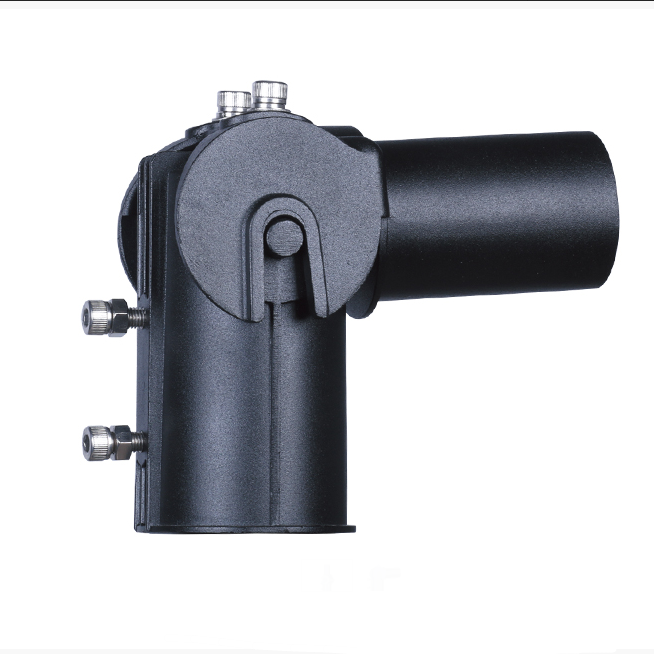Ander bykomstighede
LED-straatbeligtingslense
Vir hoë-krag LED-straatligte
Die straatliglens is gespesialiseerd in hoëkrag-LED-straatligte, wat met hoëkrag-LED's gebruik kan word.
Straatliglensmateriaal
- Glaslens
Omdat die glasmateriaal die eienskappe van hoë temperatuurweerstand en hoë penetrasietempo het, gebruik die meeste LED-straatligfabrieke dit;
- PC- of PMMA-materiaal
Hierdie twee materiale behoort aan dieselfde klas optiese plastiek, kan deur die spuitgietproduk voltooi word, maklik om asferiese ligkonsentrasie te bereik, die verskynsel van halo-vlek te verminder, die
PC- en PMMA-produksiekoste het beduidende voordele;
Straatlamplensspesifikasies
- Hoekspesifikasies
Oor die algemeen is die spesifikasies vir die straatlamplens se kollighoek: 60 grade, 80 grade, 100 grade, 120 grade verskeie soorte;
Die gewone hoogte van die straatlamppaal is 10-12 meter, en die afstand tussen die straatlamppaal is 30-35 meter, wat afgelei word van die straatlamplenshoek wat van 100-120 grade vereis word.
- Ligkolspesifikasies
2.1. Ronde kol, wat gewoonlik in binnehofgemeenskapspaaie gebruik word, is die bestralingsbereik en beligtingsvereistes nie baie hoog nie.
2.2. ovaalvlek, algemeen gebruik in motorvoertuie of nie-gemotoriseerde paaie, wat die ronde kolbestraling effektief uitskakel, rond en rond aan beide kante van die plek sal 'n donker area hê, die hele pad, die lig is nie goed versprei nie of 'n deel van die ronde kol van lig buite die padoppervlak en word nie regtig gebruik nie;
2.3. Reghoekige ligspot, toegepas op die snelweg, die effektiewe gebruik van LED-lig, die lig na die kollig is eweredig versprei op die padoppervlak, die ligvlek is uniform;
PCB-stroombaanbord elektroniese komponente
PCB (Printed Circuit Board), ook bekend as gedrukte stroombaanborde, stroombaanborde, PCB-stroombaanborde, ens., is 'n belangrike elektroniese komponent en die ondersteuningsliggaam van elektroniese komponente, en ook die verskaffer van elektriese verbindings van elektroniese komponente.
Omdat dit met behulp van elektroniese druktegnologie vervaardig word, word dit "gedrukte" stroombaanborde genoem.
Geklassifiseer volgens die aantal stroombaanlae:
Bevat enkelsydige borde, dubbelsydige borde en meerlaagige borde.
Algemene meerlaagborde is gewoonlik 4-laagborde of 6-laagborde, komplekse meerlaagborde kan tot 'n dosyn lae wees.
Meerlaagborde (Multi-Layer Boards), wat die bedrade area aansienlik vergroot.
Meerlaagborde gebruik verskeie stukke dubbelsydige borde, en in elke laag van die bord word 'n laag isolasie tussen die bord vasgeplak, die aantal lae van die bord namens die aantal onafhanklike bedradingslaag.
Gewoonlik word 4 tot 8 lae gebruik, maar dit is tegnies moontlik om PCB met tot 100 lae te maak.
Lyn
- Minimum lynwydte: 4mil (0.1mm), indien 'n lynwydte van minder as 6mil nie geproduseer kan word nie, indien die ontwerptoestande dit toelaat, hoe groter die lynwydte, hoe beter die fabrieksproduksie, hoe hoër die opbrengs, algemene ontwerproetine in 10mil of so, moet die ontwerp oorweeg word!
- Minimum lynafstand: 4 mil (0.1 mm)
- Lyn-tot-omlyn spasiëring 0.508mm (20mil)
Deurgat
- Minimum gatgrootte: 0.3mm (12mil)
- Minimum via (VIA) opening nie minder as 0.3mm (12mil), kussings aan die een kant mag nie minder as 6mil (0.153mm) wees nie, verkieslik meer as 8mil (0.2mm).
- Die afstand tussen die via (VIA) en die gat (gatrand tot gatrand) mag nie minder as 6 mil wees nie, verkieslik groter as 8 mil.
- Spasiëring tussen plate en profiel 0.508 mm (20 mil)



